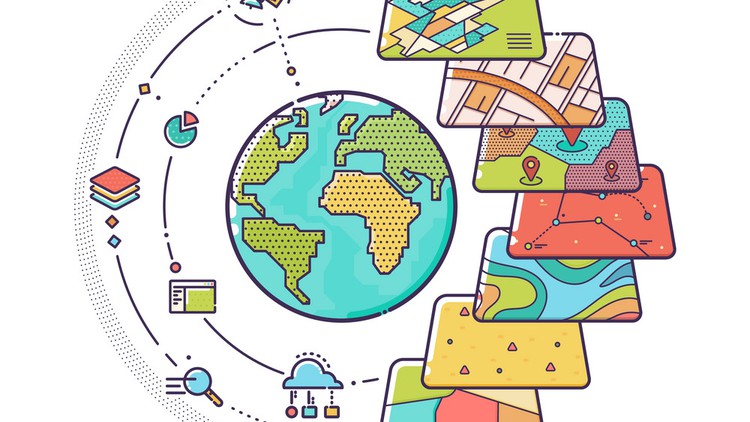
GIS & Spatial Analysis in the latest QGIS – Master Geographic Information Systems (GIS) via GIS-based project analyses
What you will learn
Learn step by step about QGIS, it’s environment and interface using the latest long-lasting release in 2022
Learn how to visualize and manipulate GIS data (vector and raster data)
Start working with spatial data on real geolocating project to master powerful freeware GIS software
Understand the basic and intermediate GIS concepts and analysis
Learn how to work on geospatial projects in QGIS environment step-by-step
Learn how to create beautiful maps in QGIS
Link GIS data analysis results to open source GIS map (open street map)
Get introduced to Remote Sensing basics and satellite image manipulation in QGIS
Description
GIS & Spatial Analysis in the latest QGIS – Master Geographic Information Systems (GIS) via GIS-based project analysis
This course provides an introduction to GIS (geographic information systems) and also introduces students to Remote Sensing in a project-oriented way. This course is based on the newest version of the open-source QGIS software available for free to get started with GIS, Remote Sensing, and geospatial data analysis. My practical geospatial analysis course will provide you with an understanding of GIS in a very short time. By the end of the course, you will feel confident and completely understand the GIS and Remote Sensing technology, learn by practice how to solve geospatial projects and how to compose beautiful maps using your data and open street map data.
Unlike other courses, my course is based on the latest version of QGIS (long-lasting release) which is essential to learn rather than spending time and money on outdated courses based on previous software releases.
- We will start by learning about QGIS open-source software, its installation, interface and plug-ins.
- This will follow with a practical and concise introduction to the GIS analysis and data type, followed by the Remote Sensing introductory section in QGIS.
- Then, I will introduce you to practical and real-life GIS projects. By using examples of this project, I will show step-by-step how to conduct GIS project analysis (from basics to advanced), while you will be also developing skills required to understand the geospatial project analysis approach. This is of great value as it will provide you with a practical understanding of the geospatial approach that is needed to solve GIS-related project-oriented tasks, for instance, in your thesis or work.
- Finally, you will learn how to visualize your GIS project results in terms of the maps.
This course will prepare the students for the basics of using GIS and Remote Sensing with open-source and free software tools. We will go over various industries where GIS and Remote Sensing can be used including agriculture, geology, mining, hydrology, forestry, environmental, and many more! It is hands-on, practical training, therefore we will only spend a brief amount of time discussing theoretical ideas related to spatial data analysis, but rather we will work practically with real-world data.
So, don’t wait and enrol now to become GIS professional tomorrow!
Content